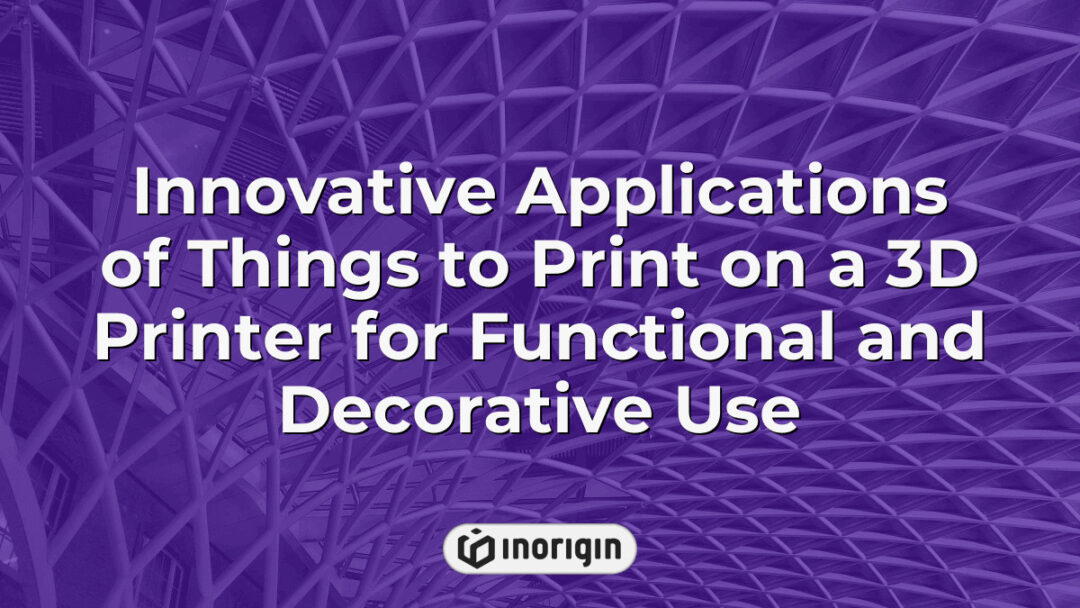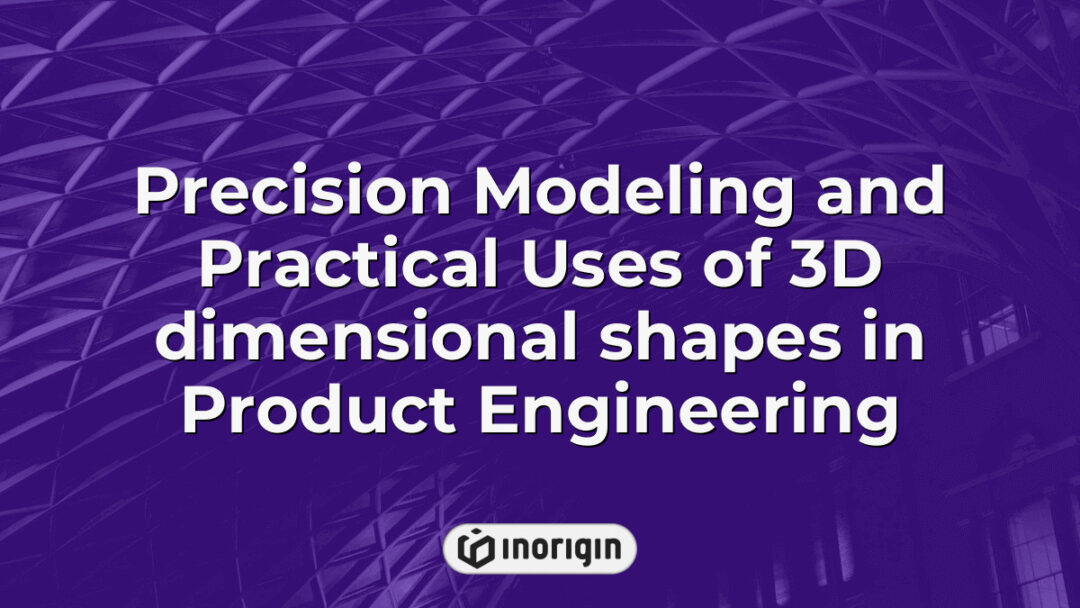In a world where flying cars and robot butlers remain tantalizingly out of reach, one revolutionary technology has democratized the art of creation: 3D printing. Imagine a scenario where procrastination is not merely the thief of time but also the muse of innovation, leading individuals to conjure objects from thin air with the simple push of a button. This captivating process invites users to materialize everything from whimsical toys to practical household items, transforming mundane desires into tangible realities—if only the printer had a sense of humor and could grasp the concept of a good cup of coffee. As the boundaries of art, engineering, and everyday life blur, countless possibilities emerge, prompting an exploration of the most intriguing and unconventional items that can be printed in three dimensions.
| Aspect | Key Takeaway |
|---|---|
| Things to Print on a 3D Printer | Exploring things to print on a 3D printer opens up diverse possibilities from functional prototypes to custom consumer products, enhancing innovation in design and engineering. |
| Essential Tools and Accessories | Printing organizers, brackets, and cable management accessories improves workflow efficiency and stability during complex 3D printing projects. |
| Home Decor and Organization | Custom shelving and storage solutions created via 3D printing offer tailored organization and aesthetic appeal, optimizing interior spaces with unique design. |
| Customized Gifts and Personal Items | Personalized 3D printed gifts combine emotional significance with practical use, crafted precisely to meet individual preferences and style. |
| Educational Models and Prototypes | 3D printed educational tools and prototypes boost experiential learning and rapid development, supporting STEM initiatives and product innovation. |
| Fun and Functional Gadgets | Innovative gadgets like self-watering planters demonstrate how 3D printing merges creativity with everyday utility, engaging both hobbyists and professionals. |
| Material Selection | Choosing suitable materials such as PLA, Nylon, or advanced composites is essential to ensure durability, functionality, and alignment with specific project requirements. |
Essential Tools and Accessories
The framework of 3D printing necessitates an array of essential tools and accessories to optimise functionality and efficiency in various projects. Firstly, tool organisers stand out as crucial elements, aiding in the structured storage of tools, thereby facilitating a smoother workflow. The convenience of having tools readily accessible cannot be overstated, especially in settings where time is of the essence. Following this, brackets emerge as integral components, providing the necessary support for assembled structures, ensuring stability throughout the printing process. These customisable brackets significantly enhance the versatility of 3D prints, allowing for more complex designs to be realised with accuracy. Furthermore, cable management becomes indispensable; a neat arrangement of cables not only contributes to safety but also minimises disruptions during print operation. As these tools and accessories converge, they create an environment that enhances workflow efficiency, reduces potential for errors, and ultimately leads to higher quality outputs in 3D printing endeavours. Hence, one can appreciate the profound impact that these items have in transforming the intricate experience of 3D printing into a more manageable undertaking.
Home Decor and Organization
What can be created when creativity marries efficiency in the context of home decor and organization? The advent of 3D printing allows for an unprecedented approach in which individuals can design and craft custom shelving solutions or organizational projects tailored to their unique spaces. As this technology becomes more accessible, the possibilities for personalisation and creativity in home environments expand significantly. Specifically, many enthusiasts are leveraging 3D printers to create bespoke items that not only serve functional purposes but also enhance aesthetic appeal within their homes.
- One effective application of 3D printing in home decor includes:
- Custom shelving units that fit awkward spaces, offering both style and utility.
- Unique decorative items, such as sculptures or wall art, that reflect personal taste.
- In terms of organization, consider:
- Storage solutions designed from scratch to maximise space efficiency.
- Innovative desk organisers that cater to specific work needs, contributing to a decluttered workspace.
The implications of this trend are evident in both practical applications and the emotional satisfaction derived from personalised creations. As individuals engage in the DIY process using 3D printing for their home decor and organizational needs, they are not merely producing items; they are cultivating a more meaningful connection with their living spaces. This transformative process encourages not just efficiency or savings but also enhances the sense of ownership and creativity within the home environment.
Customized Gifts and Personal Items
Customized gifts and personal items represent a significant domain within the realm of 3D printing, with unique designs that cater to individual preferences and practical gadgets serving as cornerstones of this field. The ability to create items tailored specifically for recipients not only enhances the emotional value of gifts but also provides opportunities for practical application in everyday life. For example, a bespoke key holder or a tailored phone stand exemplifies how personal items can blend form and function. Subsequently, the trend towards personalized consumption has prompted designers and makers to explore innovative methods to incorporate distinct aesthetics and usability into their products. Evidently, striking a balance between creativity and practicality is essential, as consumers increasingly seek items that resonate on a personal level while serving a functional purpose.
For those looking to harness the power of 3D printing for customized gifts, consider exploring local makerspaces or online platforms that encourage collaboration. Engaging with these communities can unlock creative potential, allowing for a fusion of ideas and resources that can lead to extraordinary designs. Using freely available software to customise models or even taking advantage of pre-existing templates can foster a unique touch, ultimately enhancing the gifting experience.
Educational Models and Prototypes
Educational models and prototypes represent a crucial aspect of the 3D printing paradigm, extending far beyond mere novelty. For instance, innovative projects such as a Minecraft mini lantern showcase the versatility of 3D printing in fostering creativity among learners. This specific prototype combines gaming culture with practical applications, illustrating how educational tools can be both engaging and informative. Furthermore, educational models serve not only to stimulate interest in science and technology but also to offer tactile experiences that reinforce theoretical concepts. The inherent malleability of 3D printing technology allows for rapid iteration and customisation, which can better meet the needs of diverse learning environments. Consequently, the deployment of these prototypes in classrooms can significantly impact hands-on learning and inspiration, promoting critical thinking and problem-solving skills.
Fun and Functional Gadgets
The current focus regarding 3D printing highlights an array of fun and functional gadgets, showcasing the innovative potential of this technology. For instance, while one may question the practicality of engaging in such hobbies, it is essential to demonstrate that the results can blend enjoyment with utility; self-watering planters serve as a prime example. These devices not only cater to enthusiasts keen on nurturing plants but also lessen the burden of daily care, thus appealing to busy individuals. This intersection of creativity and functionality is crucial when considering cool first prints that can captivate both novice and experienced printers alike. Not only do these gadgets offer practical solutions, but they also invite users into a community that shares a passion for creation and problem-solving. Engaging with these components of modern technology reflects a significant development within the 3D printing landscape, where personalisation meets applicability. Such advancements not only indicate emerging trends but also enhance the user experience, fostering a sense of achievement and satisfaction through tangible outcomes.
Frequently Asked Questions
What materials are best for 3D printing?
The selection of materials for 3D printing plays a crucial role in determining the application, durability, and overall functionality of the printed object. Common materials, such as PLA (polylactic acid) and ABS (acrylonitrile butadiene styrene), offer distinct advantages and limitations; for instance, while PLA is known for its ease of use and biodegradability, it exhibits lower heat resistance compared to ABS, which is more robust but emits stronger fumes during printing. Transitioning to engineering applications, materials like Nylon and PETG (glycol-modified PET) present superior strength and flexibility, catering to more demanding projects. In recent years, advancements have led to the emergence of composite filaments, integrating materials like carbon fibre or metal powders with standard plastics, which engender enhanced mechanical properties and aesthetic appeal. As the field advances, the continued exploration of alternative materials, including bio-based and recycled options, is increasingly pertinent, promising not only improved performance but also adherence to sustainability principles in manufacturing practices. Thus, the choice of material relies heavily on the specific requirements of a project, including cost, mechanical properties, and environmental considerations, ultimately shaping the future trajectory of 3D printing technologies.
How do I choose a 3D printer suited for my needs?
Choosing a 3D printer is akin to selecting a key that unlocks a myriad of creative possibilities; each choice resonates with the intended purpose and application, influencing everything from efficiency to output quality. Initially, identifying specific needs stands as the foremost consideration; potential users must reflect upon what will be printed—be it intricate prototypes for engineering applications or whimsical art pieces perhaps intended for home decor. Following this, another critical aspect is the printer type, with options ranging from FDM (Fused Deposition Modelling), which is suited for low-cost and general usage, to SLA (Stereolithography), which offers higher precision at the cost of a more complex operation and higher material expenses. Furthermore, compatibility with various materials is also essential; for instance, filaments such as PLA and ABS are common in the realm of beginner printers but may not suffice for certain industrial applications that require more robustness. In addition to these technical specifications, budget considerations certainly play a significant role; entry-level models can start at around $200, whilst professional-grade machines may exceed several thousand, setting the stage for a wide range of options. Ultimately, weighing these factors collectively ensures that the selection process aligns with both the functional requirements and budgetary constraints, thereby crafting a choice that not only meets present demands but also anticipates future needs.
What are common troubleshooting tips for 3D printing issues?
When addressing common troubleshooting tips for 3D printing issues, various factors emerge that significantly impact print quality and reliability. First, filament quality tends to play a crucial role; using low-grade material often results in inconsistent filament flow, leading to clogs or poor adhesion. Next, bed leveling remains an essential procedure that, if neglected, can cause layer misalignment or warping. This also connects with temperature settings—both nozzle and bed temperatures must be calibrated correctly to ensure optimal adhesion and material flow. Additionally, a clean print surface is frequently overlooked; residues can impede adhesion and create defects. Consequently, regular maintenance of the printer, including nozzle cleaning and hardware checks, is paramount in preemptively addressing potential faults. Ultimately, familiarity with the specific printer model can further enhance troubleshooting; each design has unique characteristics and common pitfalls that are worth noting. By systematically approaching these common issues, the printing experience can be markedly improved, ensuring more successful outcomes in fabrication tasks.
Conclusion
In conclusion, the versatility of 3D printing facilitates a remarkable array of projects, from essential tools to whimsical objects reminiscent of a bygone era. By engaging in diverse applications, individuals can transform their environments and enhance creativity, much like artisans of the past, crafting unique items for both utility and beauty.
Related posts:
- 3D printed gifts that combine precision engineering with personalized design excellence
- Innovative Applications for Things to Print in Product Design and Beyond
- Expert Selection of 3D Printer Gifts for Innovative and Personalized Creations
- Creative Things to 3D Print for Functional Gadgets, Custom Decor, and Unique Accessories
- Innovative Home and Office Creations Using Cool Things to 3D Print
- Innovative Applications of Useful 3D Prints for Everyday Living




